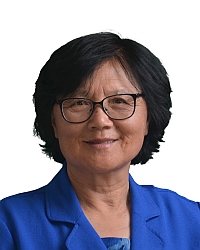TR2003-45
Time Hopping Versus Frequency Hopping in Ultrawideband Systems
-
- , "Time Hopping Versus Frequency Hopping in Ultrawideband Systems", Tech. Rep. TR2003-45, Mitsubishi Electric Research Laboratories, Cambridge, MA, August 2003.BibTeX TR2003-45 PDF
- @techreport{MERL_TR2003-45,
- author = {Miyake, M.},
- title = {Time Hopping Versus Frequency Hopping in Ultrawideband Systems},
- institution = {MERL - Mitsubishi Electric Research Laboratories},
- address = {Cambridge, MA 02139},
- number = {TR2003-45},
- month = aug,
- year = 2003,
- url = {https://www.merl.com/publications/TR2003-45/}
- }
- , "Time Hopping Versus Frequency Hopping in Ultrawideband Systems", Tech. Rep. TR2003-45, Mitsubishi Electric Research Laboratories, Cambridge, MA, August 2003.
-
MERL Contact:
-
Research Area:
Abstract:
In the last two years, interest in ultrawideband (UWB) systems has exploded. In February 2001, the American FCC (Federal Communications Commission) allowed the use of unlicensed ultra-wideband devices provided their emissions fulfill certain restrictions. Notably the FCC has not mandated any specific spreading or multiple-access (MA) technique. Rather, it is required that the band width of the transmitted signal is at least 500MHz, and that the spectral density of the transmit signal does not exceed 41.3dBm/MHz in a given band. Following the decision of the FCC, the IEEE has formed a standardization group 802.15.3a. This group is currently collecting proposals for a new standard for UWB communications with data rates inexcess of 100Mbit/s over short ranges. The spreading and MA techniques used by the different proposals can be broadly classified into (i) time-domain spreading, which uses the "time-hopping impulse radio" technique, introduced by Scholtz and Win [1,2], and (ii)frequency hopping schemes. It is thus of high practical, as well as scientific, interest to compare those two schemes. The current paper will provide such a comparison.
